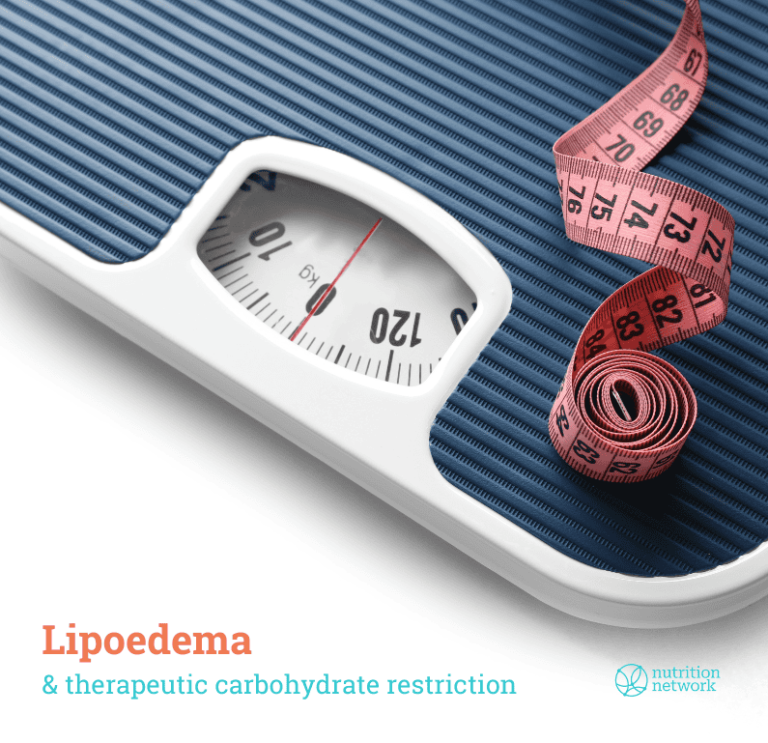Sarah Rice BSc. (Hons), MCOptom (UK), MHP, NNP
Lipoedema is a chronic and progressive disease that tends to be underdiagnosed. Often associated with obesity, lipoedema presents unique pathologic features such as increased subcutaneous fat in the lower extremities along with pain and tenderness. It can also affect the hands. More commonly affecting women, lipoedema can be caused by hormonal changes (especially higher estrogen levels) such as during puberty, pregnancy or menopause.
The pathophysiology involves systems such as the hormonal, lymphatic, and vascular systems. In addition, the connective tissue in the areas of fat distribution shows abnormalities. This causes the lymphatic vessels to malfunction, leading to leaks and fibrotic changes. These changes cause the painful symptoms and generally poor response of the condition to standard approaches such as diet and exercise.
A genetic component may play a role in the development of the disease through an association of gene mutations that lead to atypical fat distribution, but mechanisms also point to endotoxins, stress, and trauma as triggers for the development of the disease. Standard treatments such as compression garments and physical therapy offer limited benefit. The combination of treatment resistance, misdiagnosis, and painful symptoms contributes to the reduced quality of life reported by people with the condition (1–4).
While the data is still emerging, recent studies show that a ketogenic diet can improve markers and symptoms of the disease.
A systematic review and the meta-analysis conducted to examine the effectiveness of the ketogenic diet for lipedema found significant improvement in body composition and other measures such as waist circumference, BMI, waist/hip ratio, and pain levels (1).
Compared to a control diet, a randomized study by Lundanes et al. (2024) demonstrated that a low-carbohydrate diet produced greater weight loss and improvements in pain scores compared to a control group. The diets were identical in terms of energy provided, with the low-carbohydrate arm consuming 75 g of carbohydrates (73 g of fat) and the control diet consuming 180 g of carbohydrates (27 g of fat). Dietary ketosis was the goal in the low-carbohydrate group, with measurements taken and carbohydrate intake adjustments applied to ensure blood ketone levels were ≥ 0.3 mmol/L (2).
Another study by Lundanes et al. (2024) examined lipoedema in the context of hunger hormones and appetite changes on a low-carbohydrate (LCD) diet, where this group showed decreased postprandial ghrelin and increased fullness. The LCD group also experienced greater weight loss despite energy (and reported) intake (3).
Finally, in one study examining common metrics measured in lipoedema as a disorder of subcutaneous adipose tissue (SAT) (calf fat, muscle area, SAT/muscle ratio, calf circumference, and body composition), the LCD arm showed significantly reduced SAT calf area, calf circumference, and levels pain. Other metrics were similar, with both groups experiencing weight loss (4).
Pressure on the nerves due to fluid accumulation, fibrotic changes, and inflammatory responses are thought to cause the painful symptoms of this condition. The metabolic state of nutritional ketosis is thought to improve symptoms by promoting weight loss and reducing excess fluid retention and inflammation. Further studies are needed, but promising initial results offer hope to those suffering from this debilitating condition.
The Metabolism section of Nutrition Network’s reference resource has an extensive list where you can read more about the application of therapeutic carbohydrate restriction (TCR) for lipedema (under the obesity section). See training options to learn how you can support others using this approach.
References
- Amato, ACM, Amato, JLS and Benitti, DA (2024) ‘Efficacy of the ketogenic (low carbohydrate, high fat) diet as a potential dietary intervention for lipidedema: A systematic review and meta-analysis’, Nutrients, 16(19) , p. 3276. Available at: https://doi.org/10.3390/nu16193276.
- Lundanes, J., Sandnes, F., et al. (2024) ‘Effect of a low-carbohydrate diet on pain and quality of life in female patients with lipedema: a randomized controlled trial’, Obesity, 32(6), p. 1071-1082. Available in: https://doi.org/10.1002/oby.24026.
- Lundanes, J., Storliløkken, GE, et al. (2024) ‘Gastrointestinal hormones and subjective ratings of appetite following low-carbohydrate versus low-fat diets in women with lipidosis – A randomized controlled trial’, Clinical nutrition ESPEN, 65, p. 16–24. Available in: https://doi.org/10.1016/j.clnesp.2024.11.018.
- Lundanes, J., Gårseth, M., et al. (2024) ‘The effect of a low-carbohydrate diet on subcutaneous adipose tissue in women with lipedema’, Frontiers in Nutrition, 11. Available at: https://doi.org/10.3389/fnut.2024.1484612.
